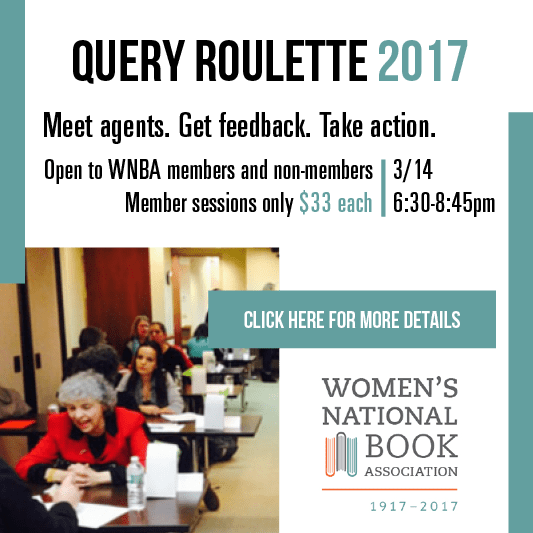 In preparation for the Centennial celebrations, we’ve studied 1917 from every angle, including literary bestsellers, fashion, and cultural fads. This month, we can celebrate one of the most powerful anniversaries of the year: women winning the right to vote in the state of New York.
In preparation for the Centennial celebrations, we’ve studied 1917 from every angle, including literary bestsellers, fashion, and cultural fads. This month, we can celebrate one of the most powerful anniversaries of the year: women winning the right to vote in the state of New York.
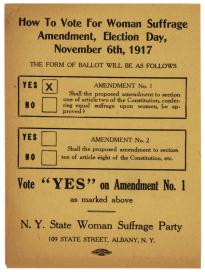
A suffrage pamphlet urging American voters to keep up with Canada by voting for women’s rights
Courtesy of Brilliant Maps
Before the 1917 vote, New York State was already a hotbed of women’s suffrage activity. In 1848, it hosted the famous Seneca Falls Convention, in which feminist leader Elizabeth Cady Stanton delivered her speech “The Declaration of Sentiments,” which partly rewrote the Declaration of Independence to recognize the rights of women. Frederick Douglass, esteemed abolitionist, called for support between the anti-slavery movement and women’s rights, granting new legitimacy to the nascent women’s suffrage cause. This seminal New York rally launched the suffrage movement into the political limelight.
Embracing the legacy of Seneca Falls and suffrage leaders Elizabeth Cady Stanton and Susan B. Anthony (neither of whom would live to see suffrage won), New Yorkers banded with women from across the country to form the National American Women’s Suffrage Association, a fierce advocate for women’s national right to vote. Under the leadership of Carrie Chapman Catt, a New York resident and protege of Susan B. Anthony, NAWSA adopted a radical new approach to suffrage that coupled state-by-state campaigns with petitions for a constitutional
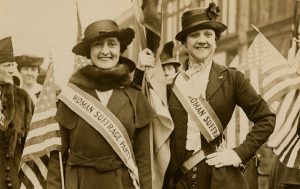
Suffragettes at the 1917 “Wake Up America” demonstration in 1917
Courtesy of the New York Historical Society
amendment. This meticulous approach allowed suffragettes to leverage state victories in their national campaign.
In New York in 1915, the suffrage movement gained momentum as volunteers strategically organized themselves into suffragette clubs and targeted large swaths of the voting population. In the height of suffrage activity, there were 20,000 women organized into 102 suffragette clubs in Westchester county alone, which together campaigned to 16-17,000 county voters. This targeted, county-by-county strategy brought New York suffrage to a vote in 1915, but the suffragettes ultimately lost by a margin of 80,000 votes.
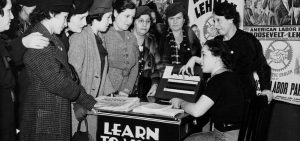
New York women learn how to vote after gaining suffrage in 1917
Courtesy of Humanities New York
In the wake of the New York defeat, NAWSA adjusted its strategy to address one of the largest criticisms of the movement: that it was disinterested in any topic but women’s suffrage. To combat this, NAWSA mobilized its volunteers to support the World War I effort by conducting a census of able-bodied American men. This laborious work saved the government thousands of dollars and inspired national confidence in NAWSA.
In November 1917, after decades of protests and activism, New Yorkers brought women’s suffrage to a second vote, this time winning by
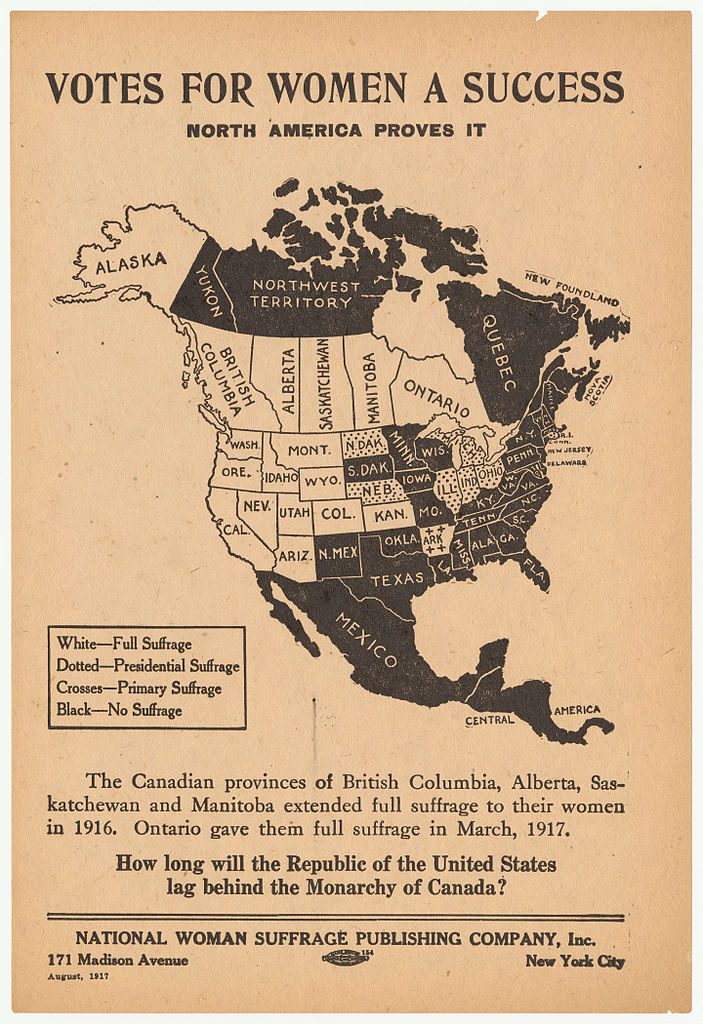
A guide to the ballot for Women’s Suffrage voters in New York
Courtesy of SUNY New Paltz
100,000 votes. Having won women’s suffrage three years before the 19th Amendment, New Yorkers celebrated by turning their attention to voter education and advocating for women to run for state and national offices.
In its foundational year, the WNBA bore witness to New York State’s struggle to grant women the right to vote. One hundred years later, we can thank these women for their example and for their tireless efforts to improve women’s lives in the public sphere.
Are you interested in more historical context for 1917? Check out our post on historical happenings here!




